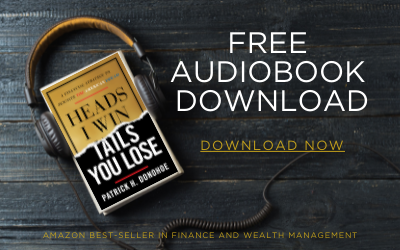You’ve come into some extra money. Maybe it’s a bonus, a tax refund, or steady cash flow for the first time in a while. Now you’re facing one of the most common (and confusing) financial decisions:
Should I pay off debt or invest?
It’s a question that doesn’t have a one-size-fits-all answer—because it’s not just about numbers. It’s about strategy, confidence, and clarity. Some people want the peace of mind that comes from eliminating debt. Others see investing as the faster route to building wealth. And many are unsure which will help them reach their goals faster—or more securely.
This article will walk you through the key considerations, from interest rates and opportunity cost to risk tolerance, cash flow, and financial priorities. We’ll explore how to evaluate your debt, when it might make sense to invest first, and how to blend both paths into a smart, personalized wealth strategy.
Pay Off Debt or Invest – Understanding the Core Question

At the heart of the question “Should I pay off debt or invest?” lies a deeper concern: How do I use my money in a way that builds lasting financial security and freedom?
It’s not just a math problem—it’s a mindset challenge. Many people are taught to fear debt, while others are encouraged to leverage it for growth. The truth lies somewhere in between. Both paying off debt and investing can build wealth—but in very different ways.
The Emotional Lens vs. the Financial Lens
Emotionally, paying off debt feels like progress. It provides relief, lowers stress, and offers a sense of control. That’s important—because financial peace matters just as much as financial growth.
Financially, investing may offer higher long-term returns—especially when debt carries a low interest rate. Every dollar not used to pay off a 4% loan could potentially earn 6–8% or more in a well-structured investment.
But returns are never guaranteed. And not all debt is created equal.
Questions That Clarify the Decision
Ask yourself:
- What type of debt am I carrying? (Is it high-interest credit card debt or low-interest mortgage debt?)
- What is the interest rate vs. potential investment return?
- Do I have an emergency fund or financial buffer?
- How comfortable am I with risk and uncertainty?
- Is this decision about math—or about peace of mind?
A Case in Point
If you have $10,000 and carry credit card debt at 18% interest, it almost always makes sense to pay that down first. But if your debt is a 3.5% mortgage or student loan and you’re considering a long-term investment with 7–10% potential returns, investing may serve you better—especially when paired with financial protection strategies like Whole Life Insurance.
2. Debt Reduction vs. Investing – The Key Tradeoffs

To make an informed decision between paying off debt or investing, you need to understand the tradeoffs—not just in dollars and cents, but in behavior, mindset, and opportunity cost.
At its core, this choice is about how to optimize your capital: do you reduce liabilities, or deploy money into assets that (hopefully) grow over time?
The Case for Paying Off Debt
Pros:
- Guaranteed return equal to your interest rate (e.g., paying off a 6% loan = 6% return)
- Improved cash flow (no monthly debt payments)
- Reduced stress and greater peace of mind
- Increased financial flexibility and lower financial risk
- Boosts your credit profile in some cases
Cons:
- Missed opportunity to earn higher returns elsewhere
- No liquidity—once you pay it off, that cash is gone
- Doesn’t create new income or appreciation by itself
The Case for Investing
Pros:
- Potential to earn more than your debt costs
- Harnesses compound growth and time in the market
- Helps build assets that support long-term goals
- Creates opportunities for passive income or future leverage
- May offer tax advantages or diversification benefits
Cons:
- No guaranteed return—investments carry risk
- Your debt still exists, and interest continues to accrue
- Market volatility can affect your strategy if not properly managed
Return on Investment vs. Interest Rate: The Break-Even Rule
A helpful rule of thumb:
- If your debt’s interest rate is higher than the expected return on investment, focus on paying down debt.
- If the expected return is higher than your debt rate (and you have strong cash flow), investing may serve you better.
For example, if you’re paying 3.5% on a mortgage but expect a 7% return in a diversified investment portfolio, the spread may justify investing—if the risk is acceptable.
Should I Pay Off Debt First or Invest? A Tiered Strategy
The question “Should I pay off debt first or invest?” becomes much clearer when you apply a tiered decision-making model. Instead of seeing it as an either/or dilemma, view it as a series of strategic checkpoints that help you evaluate your readiness to invest—and your need to reduce financial friction.
Here’s a practical way to approach it.
Tier 1: Pay Off High-Interest, Non-Deductible Debt First
If you’re carrying credit card balances, payday loans, or personal loans with interest rates over 8–10%, these are costing you more than most investments are likely to earn.
Action: Prioritize aggressively paying these down before investing.
Example: Paying off an 18% credit card is like earning an 18% guaranteed return—risk-free.
Tier 2: Build Emergency Liquidity
Before investing aggressively, ensure you have 3–6 months of expenses in liquid savings or an accessible financial tool like Whole Life Insurance cash value.
Why: Without liquidity, any financial surprise can force you into bad debt—even if your investments are performing well.
Liquidity provides the freedom to invest confidently, without jeopardizing your stability.
Tier 3: Address Medium-Interest, Tax-Deductible Debt Strategically
Debts like student loans, auto loans, or low-interest personal loans (4–7%) require more context. If they’re manageable, you may benefit more by starting to invest—especially in long-term vehicles or assets with compounding growth potential.
Action: Consider a “split strategy” of paying extra toward debt while also allocating some funds to investing.
Tier 4: Invest While Managing Low-Interest or Strategic Debt
Mortgage debt, business loans, and certain student loans (under 4%) often carry tax advantages or are part of a larger wealth-building strategy. If you’re in this category, your capital may be better deployed into investments that outpace inflation and build income or appreciation.
This is where many high-net-worth individuals operate—managing debt efficiently while investing consistently.
How Whole Life Insurance Supports Both Paths
A properly structured Whole Life Insurance policy allows you to:
- Build liquidity and protection (Tier 2)
- Access tax-free capital through policy loans (without selling investments)
- Create a personal banking system to fund debt reduction or investment opportunities on your terms
Pay Off Debt or Invest in Real Estate – A Strategic Case Study
Real estate is one of the most powerful wealth-building tools available—but it often requires significant capital. For many investors, the question becomes: Should I use that capital to pay off debt, or invest in real estate to grow wealth?
The answer depends on your financial position, the type of debt you carry, and your tolerance for leverage.
A Common Scenario
Let’s say you have:
- $50,000 in student loan debt at 5.5% interest
- $100,000 in accessible capital (from savings or a Whole Life Insurance policy)
- An opportunity to invest in a cash-flowing rental property expected to generate 8%–10% annually
You now face a strategic choice:
- Pay off the debt, eliminate interest, and boost peace of mind
- Or invest in real estate, take on some risk, but pursue greater returns and cash flow
Strategic Factors to Consider
1. Cash Flow vs. Interest Cost
If the property generates $800/month net cash flow and your student loan costs $400/month, you’re potentially doubling your capital’s productivity—if the income is stable.
2. Leverage and Liquidity
If you fund the property with a policy loan from a Whole Life Insurance plan, your capital continues to grow inside the policy even while you’re investing it in real estate. This allows you to keep liquidity while building equity.
3. Tax Implications
- Mortgage and business loan interest may be tax-deductible
- Rental income and depreciation can reduce taxable income
- Whole Life Insurance loans are typically tax-free, adding flexibility without creating liabilities
4. Exit Strategy and Risk Profile
If the market turns or the property sits vacant, will your cash flow cover both the debt service and your investment obligations? Having an emergency reserve or policy-based liquidity can mitigate that risk.
Smart Integration: Real Estate + Debt Management
You don’t always have to choose one over the other. A well-structured plan might look like:
- Paying down high-interest debt
- Using policy loans or structured capital to invest in stable, income-producing real estate
- Using rental income to continue paying off remaining debt—while building appreciating assets
Financial Freedom Strategy – Blending Growth with Stability

The ultimate goal of managing your finances isn’t just to eliminate debt or grow investments—it’s to achieve financial freedom. That means having the flexibility to make decisions based on opportunity, not obligation. And to get there, you need a strategy that blends both growth and stability.
The Traditional Dilemma: Save vs. Pay Off Debt
Most people are told they must choose between:
- Paying down debt aggressively before thinking about building wealth
- Or saving and investing while carrying the emotional and financial weight of debt
The truth is, a rigid “all or nothing” approach doesn’t serve most people well. Financial freedom is built by coordinating multiple goals at once—using structure, strategy, and clarity.
The Financial Freedom Hierarchy
- Stability Layer
- Emergency fund
- Insurance (including Whole Life for liquidity and protection)
- Budgeting and cash flow awareness
- Emergency fund
- Debt Optimization Layer
- Pay down high-interest, non-strategic debt
- Refinance or restructure where appropriate
- Prioritize debts that free up monthly cash flow
- Pay down high-interest, non-strategic debt
- Growth Layer
- Begin investing consistently (even if small amounts)
- Focus on assets that provide income and appreciation
- Use Whole Life Insurance to borrow against while continuing to build
- Begin investing consistently (even if small amounts)
- Leverage & Legacy Layer
- Use cash flow to invest or accelerate debt payoff
- Teach family members asset-based thinking
- Integrate estate planning and long-term asset protection
- Use cash flow to invest or accelerate debt payoff
How Whole Life Insurance Bridges the Gap
Whole Life Insurance supports this strategy by:
- Providing a safe, liquid reserve to protect against emergencies
- Enabling access to capital for investment opportunities or debt consolidation
- Growing tax-advantaged cash value while your capital works elsewhere
- Serving as a foundational asset for your Family Bank model
It’s not just about managing your money—it’s about designing a system that supports your freedom.
What Millionaires Do: Pay Off Debt or Invest?
When it comes to the debate between paying off debt or investing, high-net-worth individuals offer a revealing example. Most millionaires don’t eliminate all debt before investing—they understand how to use debt strategically while building wealth.
Their approach isn’t based on fear of owing money or excitement about quick gains. It’s based on control, leverage, and long-term vision.
Millionaire Money Mindset: Assets First
Wealthy individuals often prioritize buying or building assets—real estate, businesses, insurance, equities—before aggressively paying off low-interest debt. Why?
Because they focus on:
- Cash flow over debt-free living
- Leverage as a wealth accelerator
- Opportunity cost—what they lose by locking up capital in low-return outcomes
- Tax efficiency, often favoring deductible or business-related debt
They understand that money in motion—if well-structured—builds more wealth than money locked away in a paid-off loan.
When They Do Pay Off Debt
Wealthy individuals still manage debt carefully. They pay off:
- High-interest, non-deductible debt (credit cards, personal loans)
- Debt that impacts cash flow negatively or limits liquidity
- Loans that compromise financial flexibility or opportunity access
But they’ll often retain:
- Mortgages with low fixed rates
- Business loans that fund cash-flowing operations
- Policy loans from Whole Life Insurance that provide leverage without taxable consequences
How They Use Whole Life Insurance
Many millionaires integrate Whole Life Insurance into their strategies to:
- Store capital with guaranteed growth
- Access liquidity through tax-free policy loans
- Fund new investments without interrupting compounding
- Create intergenerational wealth and legacy protections
This structure allows them to invest, stay protected, and manage debt with confidence.
Lessons You Can Apply
- Don’t wait until you’re debt-free to start building assets
- Use capital where it’s most productive—not just where it “feels good”
- Understand the difference between destructive debt and strategic leverage
- Protect your liquidity and your legacy—even as you grow
FAQs Answered
Is it better to pay off debt or save money?
It depends on the type of debt and your financial situation. If you have high-interest debt, paying it off often takes priority. But if the debt is manageable and low-interest (like a mortgage or student loan), it may be smarter to build savings or invest—especially if your return outpaces the debt cost. Always start with an emergency fund before aggressive investing or debt payoff.
Should I pay my loan off early or invest?
Ask yourself: what’s the interest rate on the loan, and what’s the expected return on your investment? If the loan is at 3–5% and you’re confident in earning 6–8% or more through investing, you may be better off investing. However, if the loan causes financial stress or limits your flexibility, early repayment can offer emotional and cash flow benefits worth considering.
Should I save for retirement or pay off debt?
If your debt carries high interest, pay it down first. But if it’s manageable and you’re missing out on compound growth or employer-matching contributions, it’s critical to start investing now—even small amounts. Balancing both is often ideal: invest enough to build long-term momentum, while steadily reducing your liabilities.
Is it better to pay off debt or invest during a market downturn?
Market downturns can be a good time to invest—if you have liquidity and your debt isn’t urgent. Paying off debt may provide peace of mind, but investing during low valuations could produce significant long-term returns. This is where having access to capital through tools like Whole Life Insurance becomes a major advantage—you can do both, strategically.
Design a Strategy That Fits Your Life
Whether you choose to pay off debt or invest, the most important move is to act strategically—not emotionally. Financial freedom isn’t about eliminating every liability or chasing every opportunity. It’s about building a system that supports both your present peace of mind and your future growth.
You’ve learned how to evaluate debt, compare it to investment potential, and structure a path that fits your risk tolerance, values, and goals. You’ve also seen how tools like Whole Life Insurance can create flexibility—giving you access to capital when you need it most, while continuing to grow and protect your wealth.
Don’t leave your financial future to chance—or to generic advice. Work with a Paradigm Life Wealth Strategist to:
- Evaluate your current debt and investment landscape
- Structure a strategy that balances growth with stability
- Integrate tools like Whole Life Insurance to fund both debt reduction and wealth building
- Create a roadmap that aligns with your purpose, cash flow, and legacy goals
Take control of your financial path—schedule your strategy session today.







